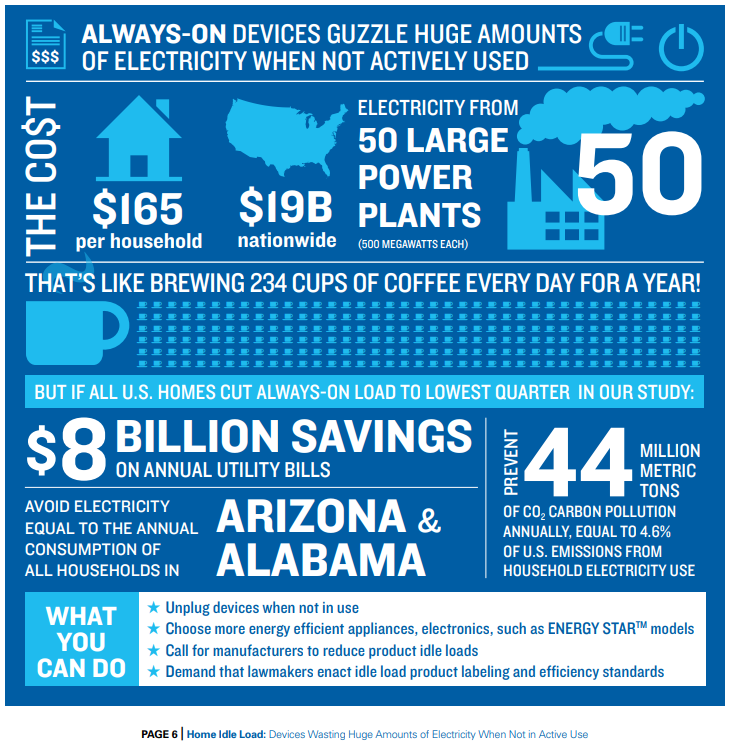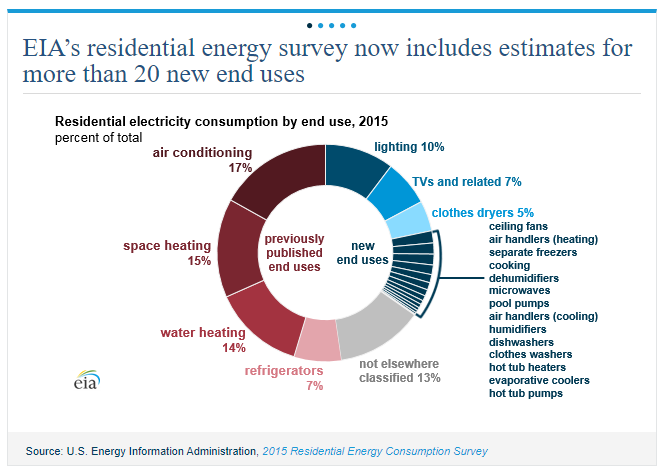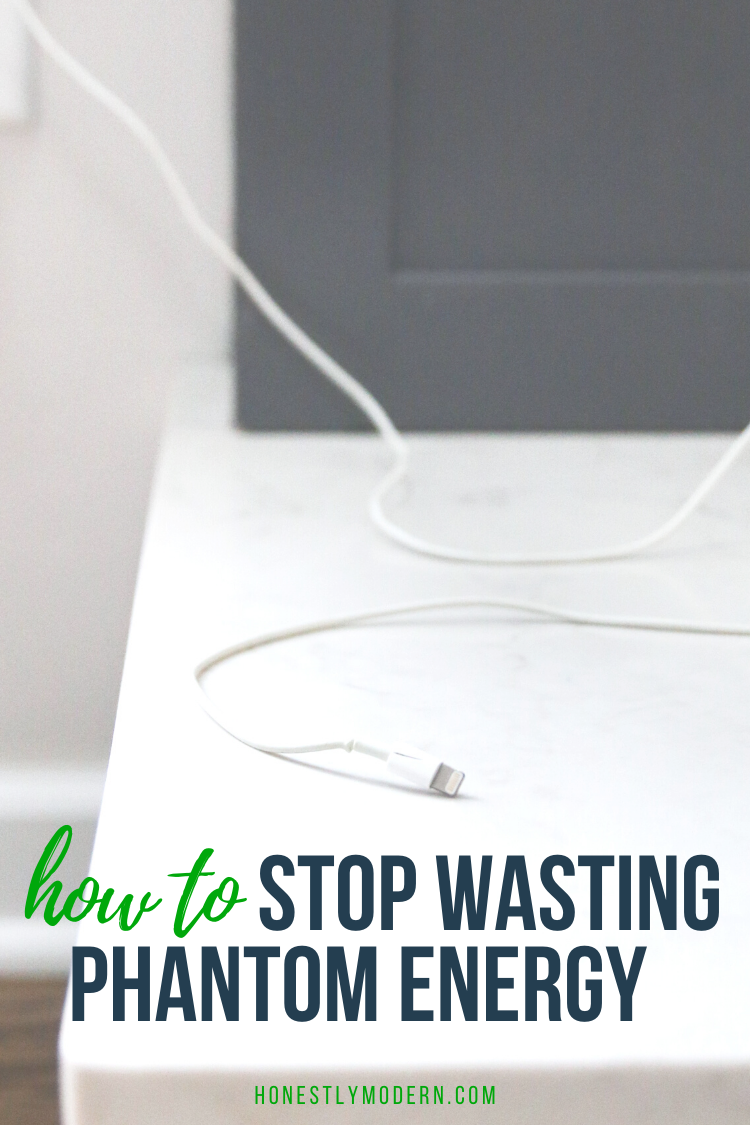How To Stop Wasting Money and Energy on Phantom Power
How much energy are we wasting every day on things we’re not even using? Let’s talk about how to reduce our utility bill and our impact on the planet simply by reducing our idle energy or phantom energy load in our home.

Where is your laptop charger right now? How about your phone charger? Are they plugged into the wall for no good reason? It might not seem like much to leave our chargers hanging in the outlets, keep our televisions, printers, and other electronic devices plugged into our walls, and run fans all day and night.
The reality, though, is that it’s a pretty big deal, and it seems to be getting worse. Did you know that, on average, about 20% of a home’s energy use is consumed by devices we aren’t even using? Many of the devices and appliances we use in our home consume seemingly small amounts of electricity when we are not using them. Because they are still plugged into the wall, and sometimes in “sleep mode” instead of fully powered off, electricity continues to flow through the circuits in these devices throughout the day.
In other words, 1/5 of the amount we spend each month on our energy bill pays for “phantom electricity usage” or electricity flowing through devices and appliances that are plugged into the wall but not actually being used.
While we’re wondering how to tackle climate change and reduce greenhouse gas emissions, 20% of residential energy we use is nearly for naught. This is a big waste of money and resources.
$19 Billion and 50 Large Power Plants Worth of Wasted Energy
According to a study from the Natural Resources Defense Council (NRDC), Americans spend $19 billion dollars a year on phantom energy. Here’s an infographic from the NRDC’s report highlighting that the idle energy usage, or the energy consumed by things we are not actually using, represents fifty large power plants worth of energy!

Although we are reluctant to make wholesale changes in our lives to significantly reduce our energy consumption, why not start by unplugging the stuff we’re not even using? According to the United States Energy Information Administration, a meaningful portion of our energy consumption is from televisions, appliances and other ‘plugged in’ devices beyond the basic heating, air conditioning and lighting energy we use to keep our homes safe and comfortable. Many of these devices we actively use for only small portions of our day.

Specifically, televisions and related devices consume 7% of our residential energy use, and about half of that is from peripheral devices like cable boxes and gaming consoles.

Save $165 Per Year By Reducing Energy Usage
If reducing our collective energy use and thereby minimizing greenhouse gas emissions isn’t motivation enough to change our habits, consider the benefit to our individual bank accounts we might achieve through a few small habit shifts.
Unplug unused devices. Incorporate power strips into our electronic device setups. Reconsider if we really need that fish pond or aquarium that continuously consumes energy and piles on to our electricity bill twenty-four hours a day, 365 days a year. The NRDC’s study indicates that we drain $165 per household per year out of our bank accounts into outlets we are not actively using.
Do A Quick Audit Of Your Idle Devices
To start reducing phantom energy use, take a walk around the house and note all the things that have cords and plug into the wall. Each of them might be a culprit for phantom energy consumption. In the NRDC’s study, electronics, household appliances, and kitchen and laundry appliances were the most egregious phantom energy use offenders. These are good places to start when considering how to easily reduce the idle energy load at home and reduce both energy consumption and energy bills each month.

More specifically, the NRDC performed detailed energy audits of a sample of ten homes and found things like fishpond equipment and aquariums, hot water pumps, televisions and set-top boxes (like cable boxes), video game consoles, and computers to be some of the things that generated the largest idle energy loads. They have also included average energy bill savings from reducing phantom energy from these devices and appliances. Those amounts really add up!
While this is definitely not an exhaustive list of the things in our own homes that might be contributing to phantom (i.e. wasted) energy usage, they might get the wheels spinning about the culprits in our houses.

For just a few dollars, you can purchase this little Kill-A-Watt tool. It tests the amount of phantom power a particular device or appliance is consuming while not in use.
Use Power Strips To Reduce Idle Energy Consumption
Over the years, we have collected a handful of power strips in our “random electronics box”. I suspect most of us have one of those and it holds things like old cell phones and irrelevant charging cords, among other things. If you have an extra power strip, put it to good use!
Tackle your phantom energy culprits by plugging cords into a power strip instead of directly into the wall. When not using the device, turn the power strip off. This will eliminate the phantom energy usage for that outlet. This is particularly effective for television and computer set ups that often have multiple devices near each other that are all used at the same time.
To set up each of the power strips effectively, you’ll need to think about how each of the devices is used. A power strip will serve several appliances or devices. When combining different items plugged into a specific power strip, be sure to match devices for which you have similar usage habits.
As an example of this, I started by rearranging how all the electronic devices in my office were plugged in. The entire exercise took me about 3 minutes. In my office, we have two computers and two monitors as well as a printer. I plugged each computer / monitor set into its own power strip and the printer into the main computer power strip. I turn off the respective power strips when each of the computers are not in use.
I also have a modem in my office. Although it uses idle power to stay on continuously, I want this on most of the time, so this is plugged directly into the wall. The idle power usage is worth having an active internet connection for our computers, phones, tablets, and televisions whenever we want to use them.
Now, I can easily turn off the power strip when I’m not in my office to shut down all the electronic devices without impacting my modem. (I think it took me longer to type all that than to actually do it…)
You can also buy smart power strips that work with devices like Alexa and Google Home, so you can turn the power strips on and off with voice activation.
Further, there are power strips that are controlled by a master outlet. These work well for computer and television setups, for example, that have several devices that work together. When you turn off the main device (the computer or television that is plugged into the master outlet), the power strip turns off related devices or appliances at the same time.
Unplug Old Cords and Idle Appliances
While cleaning up the power organization in my office, I found one cord for our old wireless router that was still plugged into the power strip, sucking energy, yet not even connected to the wireless router because we no longer use it. What a waste?! Needless-to-say, the three-minute exercise was well worth my time. This little exercise and others like it will reduce my energy bill and my power consumption and continue to pay dividends for the foreseeable future.
Reconfiguring outlet and power strip configurations will be different for everyone, but this simple example in my office illustrates that a really quick exercise can make a difference.
While setting up these configurations with cords and power strips, be sure the power strips are easily accessible, have a master outlet, or are voice-activated. If they are hidden in hard-to-reach areas and you can’t turn them off with voice or a remote, you’ll never turn them off and entirely defeat the purpose of the reorganization.
Consider Devices Gone Digital
This NRDC study was conducted in 2015. While it’s hard to know how phantom energy usage has changed since then, it’s fair to assume it may have gone up. Despite some appliances using energy more efficiently, more of our devices and appliances are digital.
Any devices that can communicate with a Google Home or Amazon Alexa, for example, must always be on to some extent so they can respond to commands. If we plug devices into a voice-activated power strip, however, only the power strip must be on continuously to “listen” for voice commands instead of all devices remaining on separately.
Appliances like coffee makers or irrigation systems that run on timers must also always be on to know when to start up and run. When purchasing new appliances and devices, do we really need the fanciest one on the market that has all the energy-consuming bells and whistles? Is it worth the ongoing energy costs? Maybe… but maybe not?
Next Steps To Reduce Phantom Energy Consumption
These are just a few ideas to reduce idle or phantom energy consumption at home, many of which we can do today or this weekend. Pages 22 – 23 of the NRDC report include a list of quick and easy DIY options to reduce our home’s idle energy load. They also offer this Home Idle Load Self-Diagnosis and Action Guide with lots of clear and concise instructions and ideas to measure and reduce the phantom energy use at home.
Beyond our own homes, we have plenty of opportunities to encourage our leaders and legislators to enact policy to drive more responsible consumer and manufacturer action. While individual actions at home are helpful, changing policy is how we drive scalable and more effective levels of change over the long-term. Pages 24 – 27 of the NRDC report dive deeper into the policy changes we can support and how they help reduce all the wasted energy that is polluting our atmosphere with wasteful greenhouse gas emissions and draining our bank accounts unnecessarily.
Quarantine Is A Great Time For An Energy Audit At Home
While we’re all stuck at home, it’s a great time to do a mini energy audit (or a full-scale audit of your home if you’re feeling so inclined). Are there ways you can rearrange your devices and appliances so they aren’t sucking up energy when you aren’t using them? Can you change the setting on your devices so they stop wasting hard-earned dollars on the power that provides no benefit to you?
How do you reduce energy consumption at your house?









